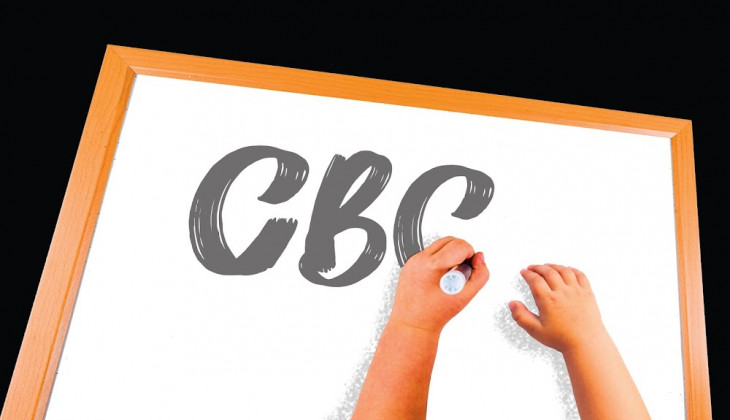Fine details on Junior Secondary School curriculum
By Irene.Githinji, September 19, 2022The much-anticipated transition of the first Competency Based Curriculum (CBC) group, now in Grade Six, is just three months away.
The Ministry of Education has been working to ensure that at least 10,000 classrooms are constructed, in a bid to accommodate the Junior Secondary School (JSS) intake expected in January.
Parents with Grade Six learners, who will sit the first ever Kenya Primary School Education Assessment (KPSEA) are not only anxious over placement of their children to JSS, but also what awaits in the all new environment.
According to the CBC taskforce report, JSS, also referred to as lower secondary, is the phase of learning between primary and Senior Secondary School (SSS), targeting learners in the age bracket of 12 to 14 years old.
“Learners in JSS will be exposed to a broad-based curriculum to enable them explore their abilities, personalities, interests and potentials,” states the report.
This is thus intended to form the basis for effective identification of career paths, talents and interests in preparation for transition to SSS.
Optional subjects
At JSS, 12 core learning areas will be taught, including Mathematics, Kiswahili, English, Life Skills, Health Education, Social Studies, Integrated Science, Business Studies, Religious Education, Agriculture, as well as Sports and Physical Education.
According to the Basic Education Curriculum Framework, ICT is a delivery tool for all subjects.
The framework indicates that optional subjects are also provided for and learners will be expected to choose atleast one and utmost two subjects from the following; Visual Arts, Performing Arts, Home Science, Computer Science, Foreign Languages-German, French, Mandarin, Arabic, Kenya Sign Language and Indigenous Languages.
CBC is learner-centred. Teachers facilitate learners to think, solve problems and evaluate evidence and arguments and generate a hypothesis.
However, the taskforce report says the primary school level lacks capacity, both in human resource and infrastructure, especially for teaching sciences, to facilitate the expected depth of engagement with the JSS CBC content.
“Further, domiciling JSS at secondary school level will optimise teacher utilisation as they will teach at both junior and senior secondary school levels,” the report states.
Approximately, 1.2 million learners who enrolled in Grade Four in 2020 will transit to JSS as the first group of the 2-6-6-3 education system, while 1.3 million under the 8-4-4 system are expected to transit to Form One next year. This means the number of Grade Six and Standard Eight learners expected to join secondary education next year will be about 2.5 million.
The taskforce team, led by Implementation of Curriculum Reforms Principal Secretary, Prof Fatuma Chege explained that relevant theoretical and conceptual approaches related to learning experiences and environments were undertaken to domicile JSS.
The theories included child growth and development, which also reinforced that learners would operate optimally in environments that take cognizance of their psycho-emotional development.
Already, at least 60,000 secondary school teachers drawn from public and private secondary schools, including special needs institutions have been trained to implement Grade Seven syllabus next year.
Teachers Service Commission (TSC) Secretary, Nancy Macharia launched the training programme in April and urged teachers to pay special attention and offer psychosocial support to JSS learners next year since they are younger than the previous cohort that joined secondary school under the 8-4-4 system.
“We are transiting to lower secondary where we are dealing with a broad-based curriculum, which requires that our teachers are retooled in the way they handle content. Therefore, this training is critical in the junior secondary teacher training,” said Macharia.
Each secondary school nominated six teachers drawn from the subject areas clustered according to departments, with TSC targeting to train all 116,024 secondary school teachers by the end of the year.
The training targeted teachers of languages, pure sciences, applied sciences, mathematics, humanities and technical subjects.
“This is just one of the many trainings that we will mount for teachers to ensure all our staff are provided with needed skills to handle the CBC. The training provides a shift from the traditional mode where the teacher stands in front of the class to the teacher being in groups discussing with the learners,” she explained.
She said the pedagogical approaches used in the curriculum delivery are inquiry-based, demonstration, discussions, experimentation and other methods that will assist the learner to develop their talents, potential and skills.
The teachers will be expected to improvise or create teaching and learning resources available in the environment.
The Government allocated TSC at least Sh1 billion for capacity building drive, which seeks to retool the over 116,000 secondary school teachers.
Inform learner attendance
At the same time, the Ministry of Education launched the re-engineered National Education Management Information System (NEMIS), which introduced new process.
Education Cabinet Secretary Prof George Magoha said the parental role introduced is critical, because it will inform learner attendance, a significant feature under CBC.
“Parents will be able to have a view of this process and monitor their child’s attendance,” Magoha explained when he launched the re-engineered NEMIS recently.
“ It will now also be possible for parents to view their children’s performance on the system and possible for schools to capture and view learner performance on the system,” he added.
With integration with the Kenya National Examinations Council (KNEC) system, management of learner performance will be a real-time process, giving parents a correct reflection of their children’s results at any one time.
